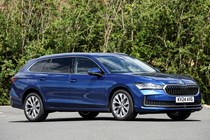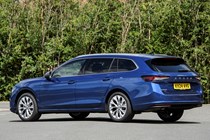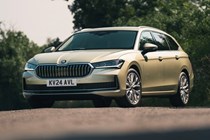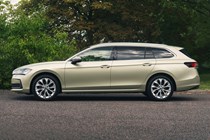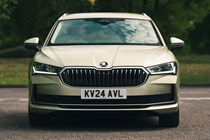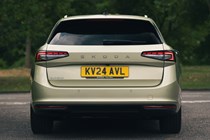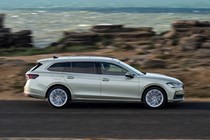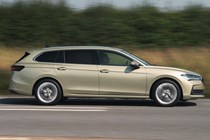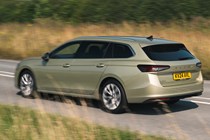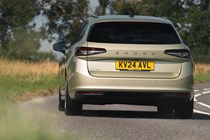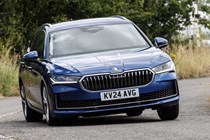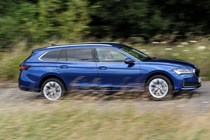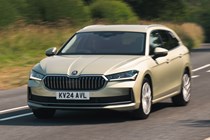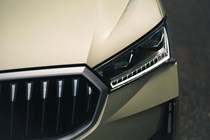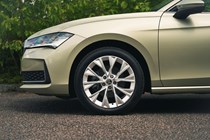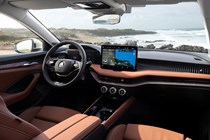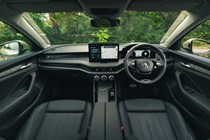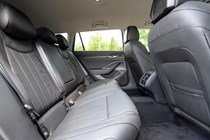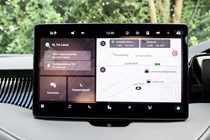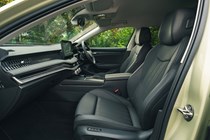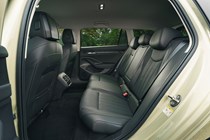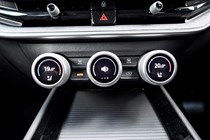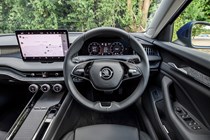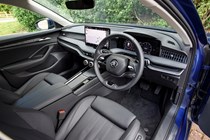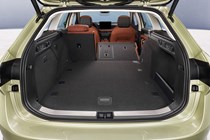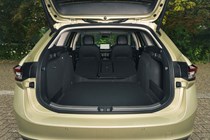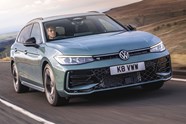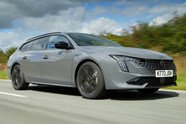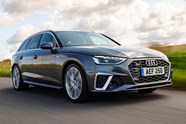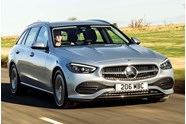
Skoda Superb Estate review

At a glance
| Price new | £37,225 - £50,415 |
|---|---|
| Used prices | £23,406 - £38,940 |
| Road tax cost | £195 - £620 |
| Insurance group | 23 - 35 |
Get an insurance quote with

|
|
| Fuel economy | 35.3 - 56.5 mpg |
| Miles per pound | 5.2 - 8.3 |
| Number of doors | 5 |
| View full specs for a specific version | |
Available fuel types
Petrol
Diesel
Hybrid
Pros & cons
- Hugely spacious and practical
- Very comfortable and refined
- Modern but easy-to-understand interior
- Expensive in top-spec L&K trim
- Some minor interior quality concerns
- Rivals are more fun to drive
Skoda Superb Estate rivals
Overview
While Skoda’s line-up of cars has changed and grown increasingly in recent years, a constant over the past two decades has been the Superb. First introduced in 2001, it has been the Skoda flagship ever since its update into the second generation in 2008, is renowned as a family estate car for its hugely spacious interior and value for money.
Skoda has returned with a new fourth-generation Superb, which launched first as an estate, followed by a large and sleek-looking hatchback. In typical Skoda style, it hasn’t thrown out the rule book but has aimed to improve on what was already one of the most commendable cars on sale.

On the inside, the Superb gets a more modern look courtesy of a decluttered cabin but retains many key physical buttons while still coming with a large new touchscreen. The latest generation of Volkswagen Group engines is also used, including a mild-hybrid petrol for the first time and a new plug-in hybrid.
While the UK’s estate car market is in decline, Skoda is committed to it as it accounts for a worthwhile percentage of global Superb (and Octavia) Estate sales. But can it compete with the near-identical Volkswagen Passat, as well as more premium rivals like the Mercedes C-Class Estate?
We were at the internationaI launch in Germany and have also managed to drive all the engine variants in the UK. You can read elsewhere how we test cars, but needless to say, we managed to get a long run in several versions.
What’s it like inside?
Skoda has managed to get the balance just right in terms of modern screens and physical controls with the new Superb, with its cabin being a real highlight.
A 13.0-inch touchscreen dominates the interior, and though it won’t be liked by those who are averse to the ‘iPad stuck to the dash’ look, it is very quick and easy to operate, with plenty of useful shortcut buttons. Other modern details include new ’Smart Dials’, essentially three turn-knobs below the touchscreen. The two outer dials control the climate control, but also the heated and ventilated seats.
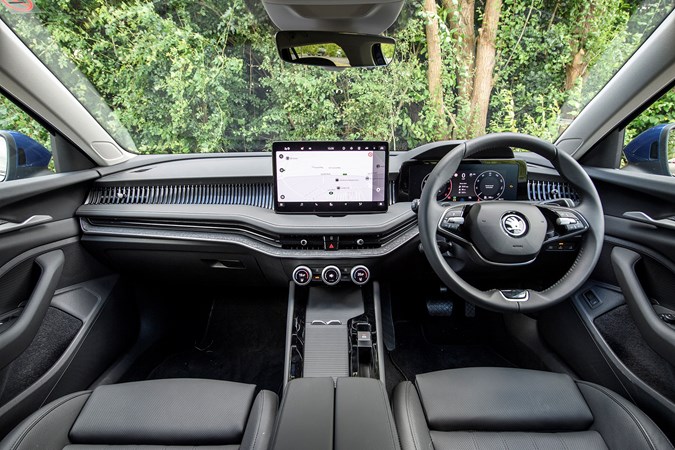
Meanwhile, the middle dial controls up to four different functions (out of a possible six), with features including volume, fan speed and driving mode. The buttons work well and are a great compromise between keeping physical buttons and modernising the cabin. The material they’re made from does feel quite cheap, however – a juxtaposition to the rest of the cabin. If you look at the interior photo, you’ll also see that a rectangular instrument cluster has been wedged into the round shape, which seems an afterthought.
One area that the Superb Estate can not be criticised is when it comes to space and versatility. This new model is 40mm longer than its predecessor, and at 4.9-metres long, is a sizeable car. But the space is put to good use – there is loads of rear-seat room, even for the tallest adults, while the 690-litre boot is one of the largest of any car on sale today.
It’s packed with what Skoda calls ’Simply Clever’ features, which are practical touches that aim to improve everyday usability. Features such as an electric-operated load cover, sliding rear centre armrest and an umbrella in the driver’s door all show that Skoda is a brand committed to making cars that are easy and helpful to use.

Skoda Superb engines
The engine choice on the Superb currently consists of two diesel engines and one petrol, with all using a seven-speed DSG automatic gearbox.
Even though demand for diesel has fallen in recent years, it’s still expected to account for a decent chunk of this Skoda’s sales. All diesel models use the Volkswagen Group’s acclaimed 2.0-litre TDI unit. It produces 150hp in its standard form, but a more powerful 190hp four-wheel-drive version is also available.
Choose the lesser of the two and it can accelerate from 0-62mph in 9.3 seconds, with Skoda claiming up to 57mpg. The 190hp model’s 7.3-second 0-62mph time makes it noticeably quicker, though isn’t quite so efficient, with Skoda promising up to 48mpg.
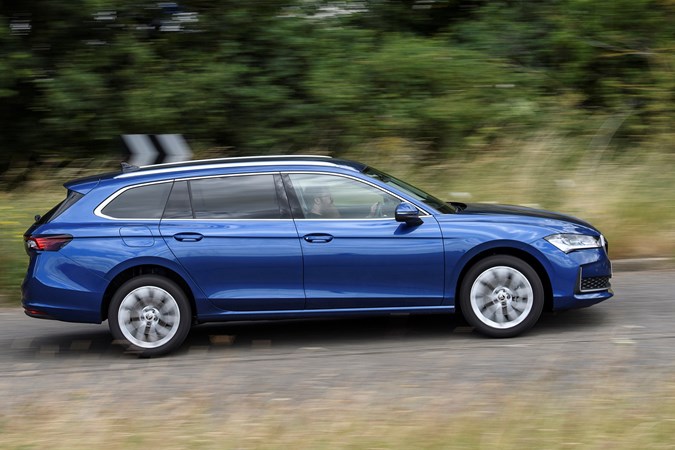
If you’d prefer a petrol, there’s a new 150hp 1.5-litre mild-hybrid petrol available. We haven’t yet had a chance to try it, but it could be a great all-rounder. Skoda claims up to 53mpg, while a 9.3-second 0-62mph time is identical to the diesel with the same power.
A plug-in hybrid has been part of the Skoda Superb line-up since 2019, and that continues with this new car. This time, the previous 1.4-litre petrol-electric setup is swapped out in favour of a new 1.5-litre petrol engine, though the combined power output remains the same at 204hp.
Designated the Superb iV, this new plug-in hybrid also uses a much larger 25.7kWh battery, which offers a 62-mile electric range – almost double that of the previous model. It can be charged in 2.5 hours using an 11kW domestic wallbox, while being compatible with DC rapid charging. With this, the battery can be topped up from 10-80% in 25 minutes. That car is covered in its own review.
What’s it like to drive?
Most of our driving with the new Skoda Superb so far has taken place in the diesel, with only a brief go in the plug-in hybrid.
If you do a lot of longer journeys, the diesel remains the best choice. Even with the 150hp engine under the bonnet, which isn’t a lot of power for a car of this size, it’s able to get up to speed in a quick enough manner for most. Though it makes quite a bit of noise when idling and under harsh acceleration, once at speed it settles down well while offering an excellent and smooth power delivery. It also has a huge driving range of up to around 800 miles from a tank.
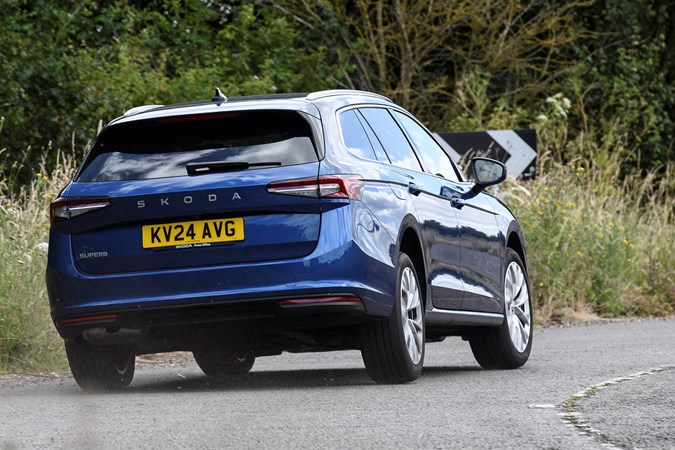
The Superb’s refinement and comfort are top-draw too, as with its acoustic glass, outside noise is almost absent from the cabin. It’s also available with a new version of Dynamic Chassis Control (DCC), which lets you tailor the suspension for either comfort or sportiness or somewhere in between. In the most comfortable setting, the ride is wonderfully supple, even when riding on larger alloy wheels.
It’s not the last word in driving enjoyment, however, but given its size and focus on comfort, it handles well, with body roll kept in check. It will be interesting to see if the Superb feels more lively when more powerful petrol engines and a firmer-riding Sportline version are introduced later in 2024.
What models and trims are available?
There are three versions of the Superb available – SE Technology, SE L and a top-spec Laurin & Klement (L&K) model named after Skoda’s founders.
All versions come with lots of standard equipment, with the SE Technology trim featuring heated and massaging front seats, a 13.0-inch touchscreen with wireless Apple CarPlay and Android Auto and a 10.25-inch digital instrument cluster. You also get a reversing camera and adaptive cruise control.
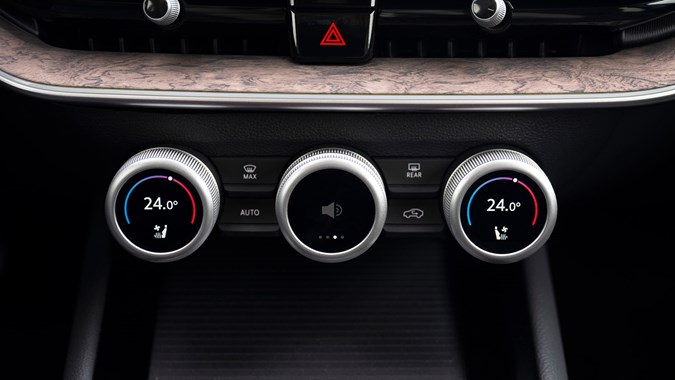
The mid-range SE L trim brings 18-inch alloy wheels, electric and ventilated front seats, an electric boot, Matrix LED headlights and leather upholstery to name just a few features.
The flagship L&K trim brings specific dark chrome styling, along with a 14-speaker Canton sound system, a spare wheel and a 360-degree parking camera. You also get the aforementioned Dynamic Chassis Control, which is usually an expensive extra.
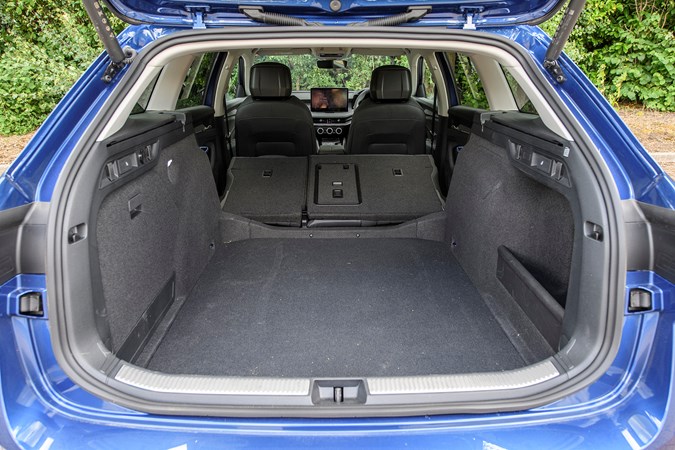
What else should I know?
Prices for the Skoda Superb Estate start from £36,165, which costs £1,300 more than the hatchback. There’s around £550 difference between the mild-hybrid petrol and diesel, too.
The mid-range SE L comes in at £39,520, and the flagship L&K is quite a lot more expensive at £47,100, though is only available with the top-spec diesel 4x4 engine at the moment.
But does this combination of space and value make the Superb Estate as easy to recommend as before? Should you buy one, or just submit to the obvious and buy a bulkier and family-friendly SUV instead? Read on for our verdict to find out.


